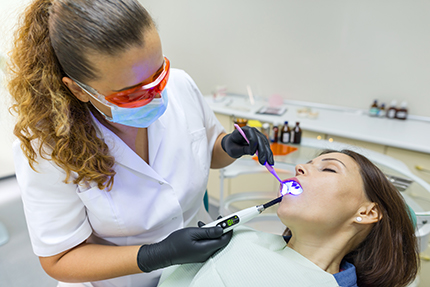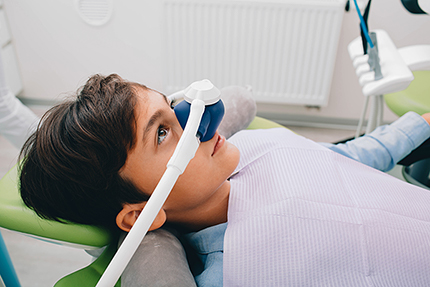Dental anxiety is common — studies estimate that tens of millions of Americans avoid or delay care because of fear or discomfort. If dental visits make you tense, the office of Edward J. Sharkey, DMD offers compassionate sedation options designed to help patients get the care they need with minimal stress. Our focus is on safe, predictable techniques that let you remain comfortable while we restore and protect your oral health.
Avoiding the dentist because of anxiety can allow small problems to become larger ones over time. Sedation dentistry bridges that gap by reducing the emotional and physical barriers that keep people from routine exams or necessary treatment. With appropriate planning and monitoring, sedation can transform an intimidating visit into a calm, manageable experience.
Below you’ll find clear, practical information about how sedation works, which patients often benefit, the types commonly used in an office setting, and the safety measures we take to protect your well-being throughout treatment.
Sedation dentistry is about more than masking discomfort; it addresses the anxiety and sensory overload that can make dental care difficult for many patients. By lowering stress and increasing relaxation, sedation helps patients tolerate procedures they might otherwise postpone — from routine fillings to more involved restorative work. The effect can be both immediate (less anxiety in the chair) and long-term (greater willingness to attend regular care).
Patients under conscious forms of sedation remain responsive to verbal cues but experience reduced awareness of sounds, smells, and the physical sensations that often trigger fear. This combination of comfort and cooperation allows the dental team to work efficiently while preserving patient dignity and control over the visit.
For those who have avoided dental care for years, sedation can be the first step toward rebuilding oral health. It removes the emotional impediments to treatment, enabling dentists to diagnose accurately and complete procedures with fewer interruptions and less trauma for the patient.
Sedation is not a one-size-fits-all solution, but there are clear scenarios where it offers meaningful advantages. Patients with a diagnosed dental phobia, for example, often find sedation essential to receiving routine and restorative care. Similarly, people who experience intense gagging, sensitivity, or panic at the thought of dental instruments commonly benefit from calming medication that reduces reflexes and reactivity.
Other groups who may be good candidates include those needing extensive or lengthy treatment, people with difficulty sitting still (including some children and patients with special needs), and anyone whose medical or psychological status makes anxiety a barrier to effective care. The best approach is determined through an individualized assessment of medical history, current medications, and the planned procedure.
Choosing sedation can also be practical: when multiple treatments are required, appropriate sedation can allow more work to be completed in a single visit, reducing the overall number of appointments and the stress associated with repeated visits.

Several forms of sedation are commonly used in dental offices. Each method produces a different depth of relaxation and has its own benefits and limitations. We review options with patients and recommend the approach that balances comfort, safety, and the specific needs of the procedure.
The decision about which technique to use is based on the patient’s anxiety level, medical background, and the expected length and complexity of the treatment. Below are the approaches you are most likely to encounter in an office setting.
In-office conscious sedation keeps patients relaxed and often drowsy while they remain able to respond to verbal commands. Breathing is maintained without advanced airway support, and vital signs are monitored throughout. Conscious sedation is appropriate for most dental procedures that require more than local anesthesia alone.
General anesthesia, by contrast, induces a deep, unresponsive state and is performed in a hospital or surgical center when medical conditions or the nature of the procedure make it necessary. For typical dental office care, conscious sedation provides the comfort and cooperation patients need without the risks and logistics associated with full anesthesia.
We tailor conscious sedation to the individual. Mild sedation may be sufficient for routine anxiety, while moderate sedation can help patients tolerate longer or more invasive procedures. Close monitoring and the ability to adjust medication levels during treatment allow clinicians to maintain an appropriate depth of sedation while prioritizing patient safety.
Local anesthetic is still used in conjunction with sedation to eliminate pain at the treatment site. Sedation targets the emotional and cognitive response to treatment; local anesthesia addresses physical sensation.
Nitrous oxide is a fast-acting, easily reversible inhaled sedative used to reduce mild to moderate anxiety. It’s delivered through a small nasal mask and mixed with oxygen; when the procedure is complete, the gas is stopped and the patient typically returns to full awareness within minutes. Nitrous oxide is often used for patients who need a gentle, short-term calming effect without prolonged recovery.
Oral sedation involves taking a prescribed medication before an appointment to promote relaxation. It can range from mild to moderate in effect depending on the drug and dose. Because oral sedatives can impair coordination and judgment, patients are advised to arrange for a responsible escort to and from the appointment; recovery time can vary.
IV sedation delivers medication directly into the bloodstream for rapid, controllable effects. It is used when deeper levels of sedation are needed or when precise control over the sedation level is important. The dental team can adjust dosing as the procedure progresses to maintain comfort while ensuring safety.
Because IV sedatives act quickly, patients will receive specific pre-appointment instructions — such as guidance on food and fluid intake — and must have a designated escort for the trip home after treatment.

Safety is the foundation of any sedation program. Before recommending sedation, the dental team conducts a thorough review of medical history, current medications, and any conditions that could affect sedation choices. This review allows clinicians to identify risks and tailor a plan that minimizes them.
Monitoring is continuous during sedated procedures; blood pressure, heart rate, oxygenation, and respiratory status are observed so adjustments can be made immediately if needed. Staff are trained in emergency response and airway management, and equipment for resuscitation and oxygen delivery is kept on hand.
Our practice emphasizes individualized care. For example, patients who require more advanced monitoring or whose medical conditions warrant specialized oversight will be managed accordingly. Dr. Sharkey has recognized training in dental anesthesiology, and our team follows established protocols to ensure sedation is used appropriately for each patient’s needs.
Preparation helps make a sedated visit safe and effective. Prior to treatment you will receive clear instructions about eating, drinking, and medication management based on the type of sedation planned. For some sedatives, fasting is required; for others, a light meal may be acceptable. Always follow the specific guidance provided by our office.
Arrange for a responsible adult to accompany you to the appointment and drive you home if your sedative could affect your coordination or awareness. Aftercare varies by sedation type: nitrous oxide commonly allows immediate return to normal activities, while oral or IV sedation may require a longer recovery period and rest at home.
When you wake from sedation you may feel groggy and have limited memory of the procedure; this is a normal and intended effect for many patients. Hydration, rest, and following post-treatment instructions are important for a smooth recovery. Our team will review discharge instructions with you and the person accompanying you to ensure a safe transition home.
Sedation dentistry can make essential dental care accessible to patients who otherwise struggle with treatment-related anxiety or physical barriers to care. If you’re curious whether sedation is appropriate for your situation, contact us to discuss options and next steps. Our goal is to help you receive effective dental care in a manner that respects your comfort and safety.
Sedation dentistry offers patients with general anxiety or fears about a dental procedure the opportunity to have a more comfortable and stress-free experience. By utilizing safe and controlled sedation techniques, the patient is eased into a state of complete relaxation before the procedure. This approach eliminates discomfort, pain, and preoperative anxiety, and typically makes patients feel more at ease post-operatively, as they have little or no memory of the actual moment-to-moment procedure.
Local anesthesia involves an injection directly into or close to the area where a procedure is being performed. While it eliminates any sensation of pain in the targeted area, it does not affect your state of mind or level of anxiety. When a patient receives sedation, additional medications to ease anxiety and promote relaxation are employed in advance of local anesthesia. In this way, both the stress and discomfort associated with a procedure are eliminated. Sedation can be administered in a variety of forms based upon patient needs and the recommendations of the dentist or dental anesthesiologist.
Choosing the most appropriate method of sedation for a procedure depends on a variety of factors such as a patient's medical history and their level of anxiety. Dental sedation can come in the form of nitrous oxide sedation, oral conscious sedation, and IV sedation. Certain patients receiving comprehensive treatment or undergoing a complex surgical procedure may require general anesthesia in a hospital setting.
Nitrous oxide, or "laughing gas," is a mild sedative, which is inhaled through a small mask over the nose. A standard in dental sedation for decades, the effects of nitrous oxide are almost immediate and wear off quickly once your procedure is completed.
Oral sedation involves the prescription of an oral medication prior to your appointment. Taken at the recommended time before your visit, oral sedation allows you to feel fully relaxed by the time you're ready for your procedure. With oral sedation, it's necessary to plan on having an escort to and from your dentist's office.
IV Sedation is administered intravenously, or directly into a vein. It is typically indicated when a deeper state of sedation is required. Your dentist will provide you with specific instructions before your visit, and require that you have an escort for the trip home from your appointment.